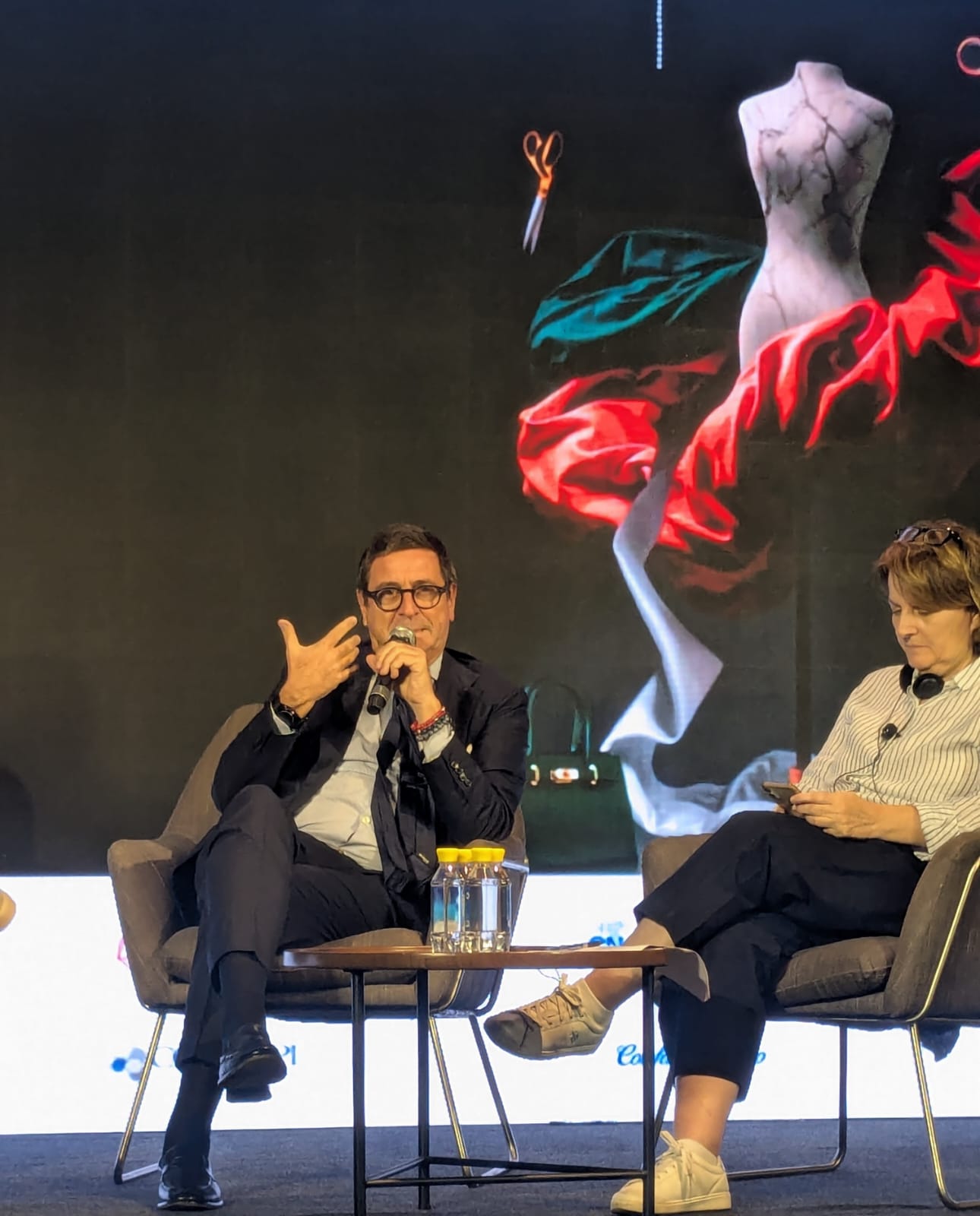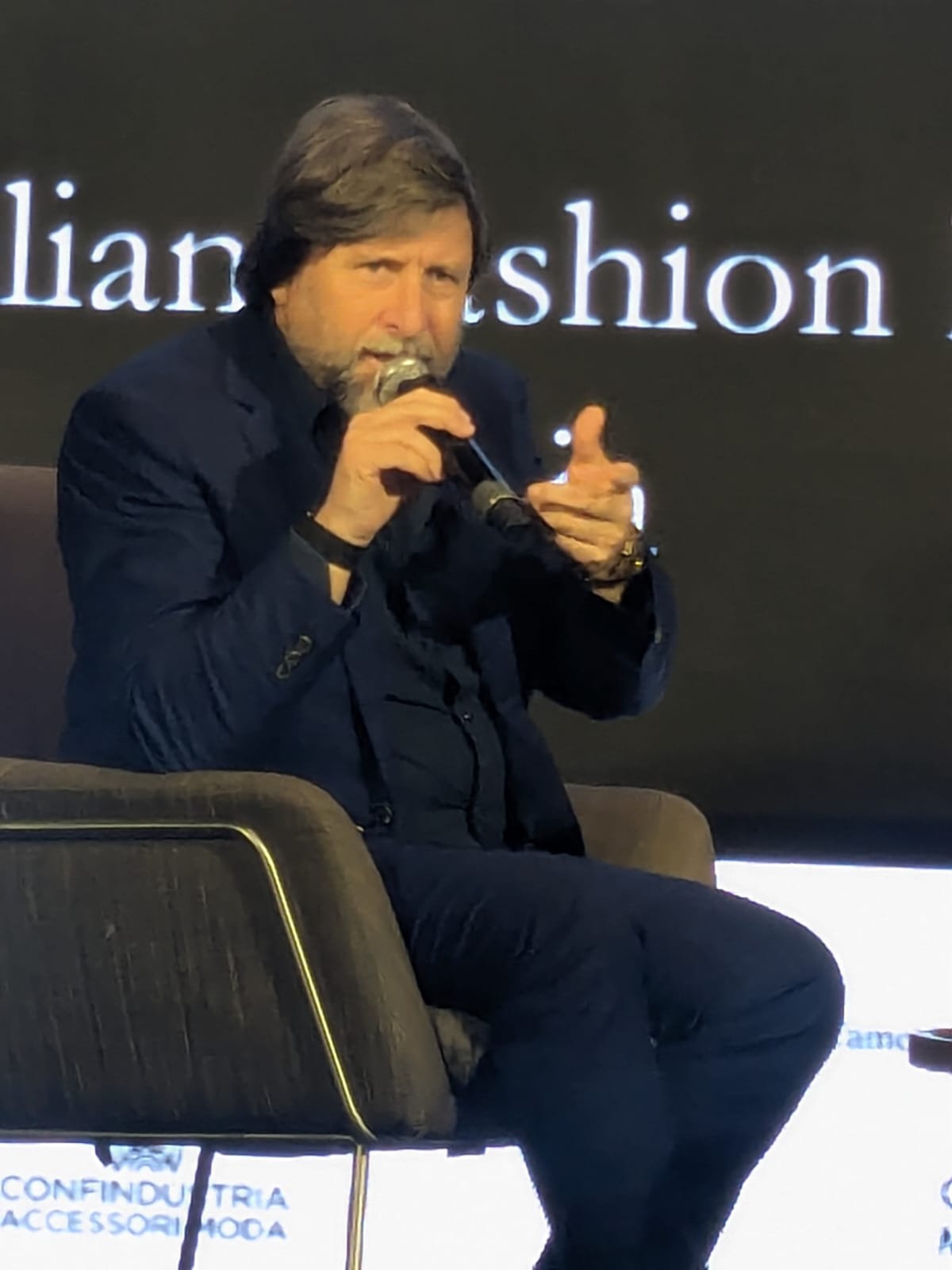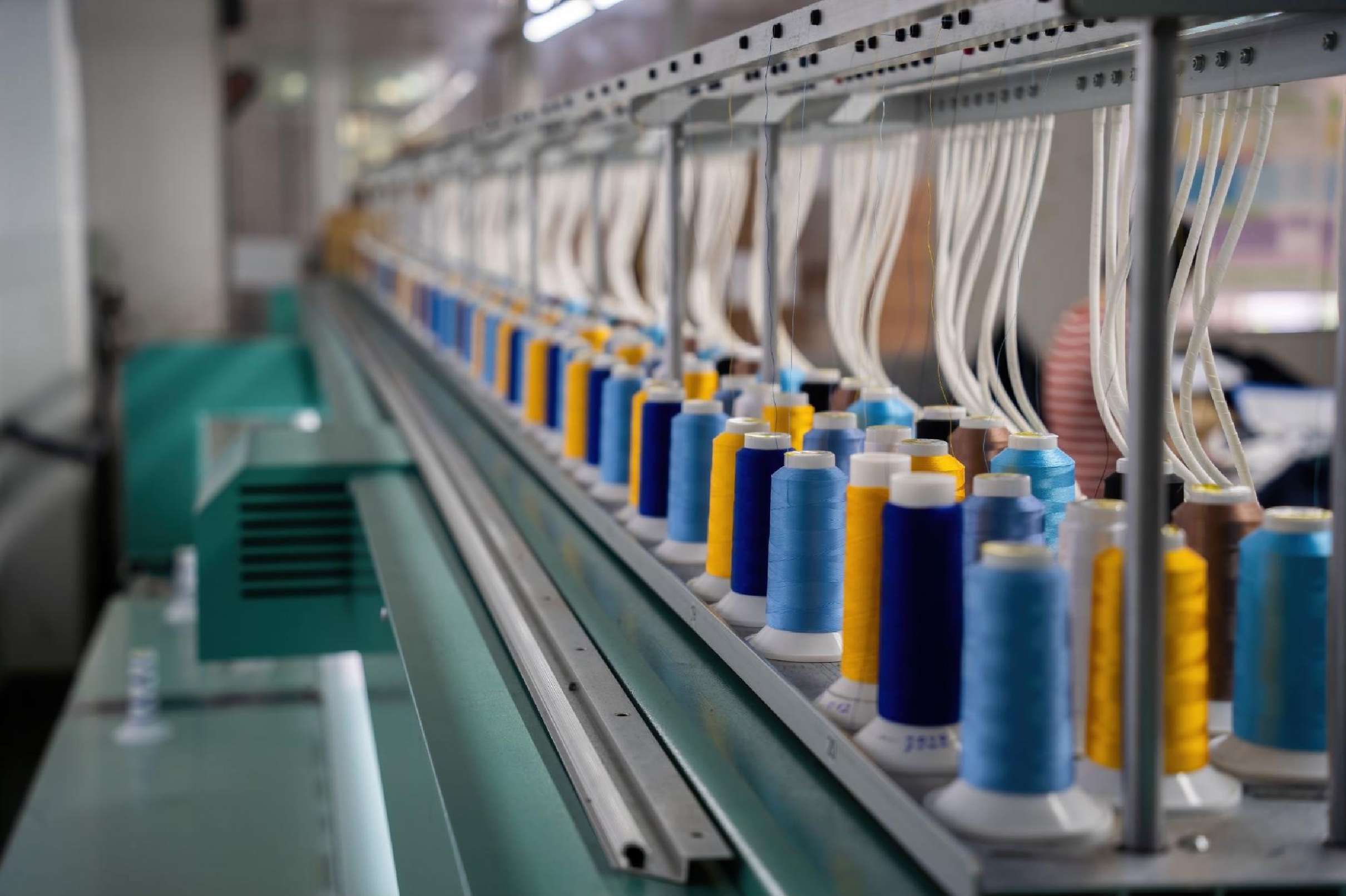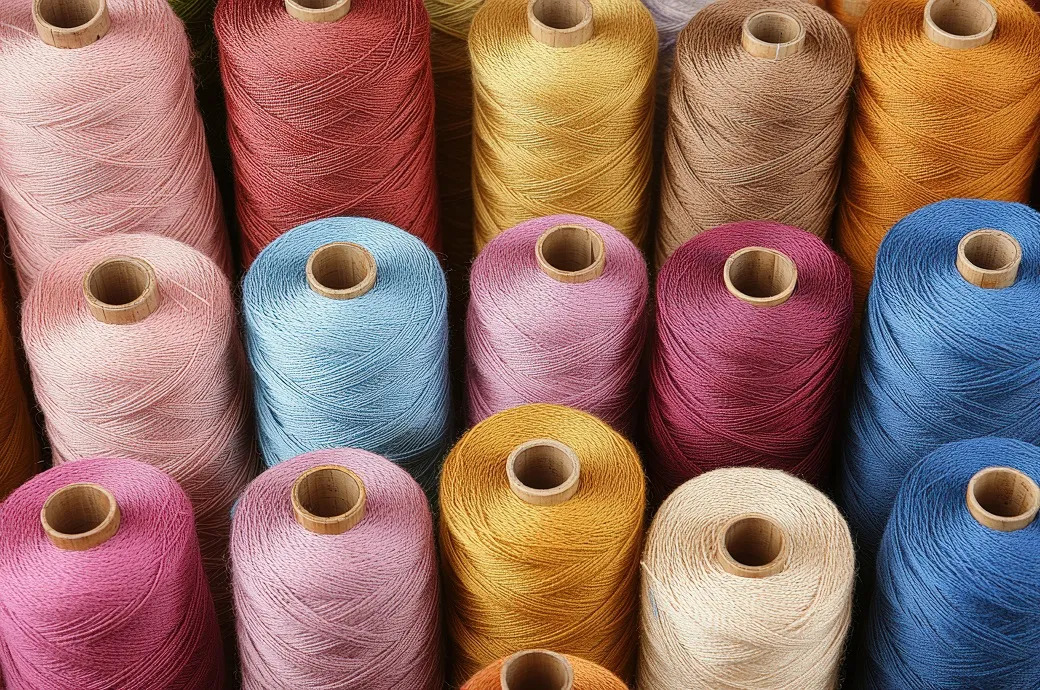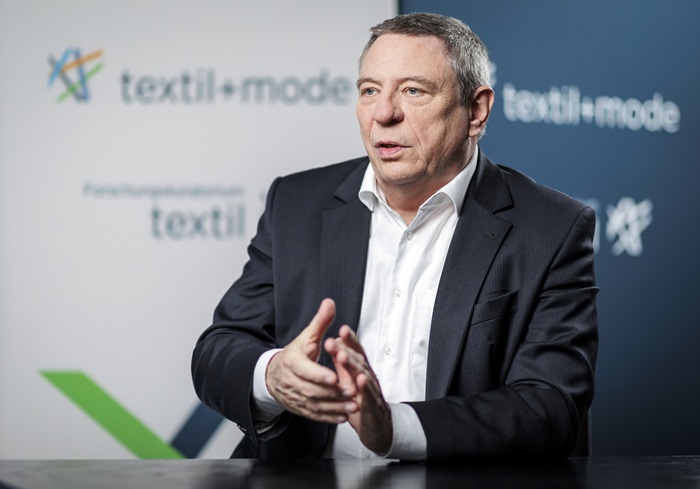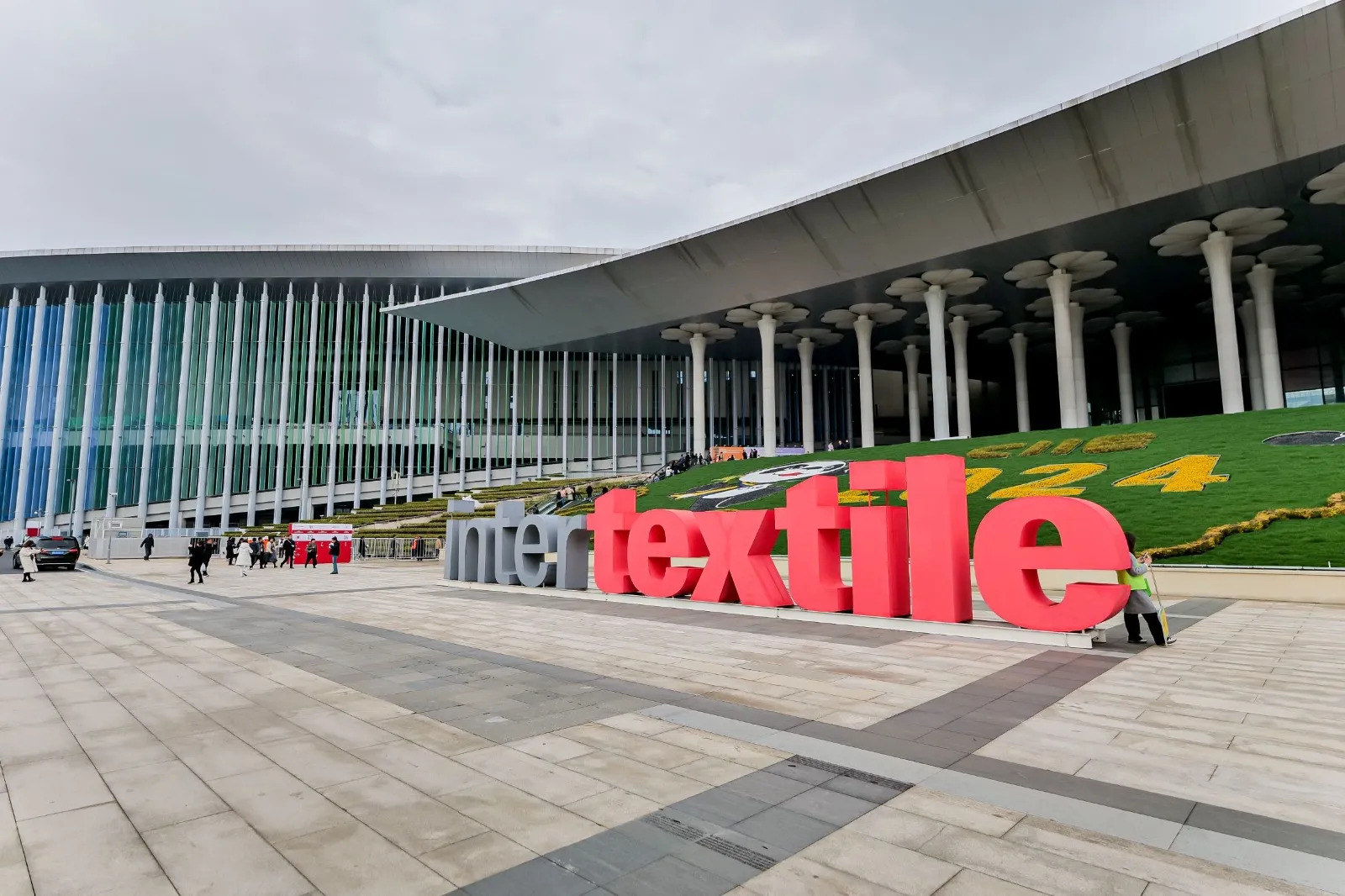FW
Demonstrating significant international engagement and positioning Pakistan as a rising center for textile innovation in Asia, the 30th Textile Asia Exhibition ended on a successful note in Faisalabad.
Supported by the Special Investment Facilitation Council (SIFC), the event attracted exhibitors and visitors from numerous countries, including China, Turkey, Germany, Japan, Italy, Switzerland, Korea, Russia, and Malaysia.
Serving as a platform to boost exports, the exhibition encouraged industrial growth within Pakistan's textile sector. It displayed cutting-edge machinery, smart textiles, and sustainable industrial solutions, showcasing the industry's current technological trends and future path.
Hailed as the most comprehensive and effective exhibition for the textile and garment machinery in the region, Industry experts have hailed Textile Asia 2025 as the most comprehensive and effective exhibition for textile and garment machinery in the region. The event highlighted Pakistan's increasing capabilities in textile manufacturing while fostering business connections between domestic manufacturers and international markets.
This year's exhibition has generated significant opportunities for knowledge transfer and technological advancement in Pakistan’s textile sector, states a representative from the organizing committee, emphasizing the exhibition's role in modernizing the country’s textile industry.
International participants showcased advanced technologies aimed at enhancing production efficiency and product quality while minimizing environmental impact. Local manufacturers had the chance to explore these innovations directly, potentially influencing future investment decisions.
The exhibition also featured specialized areas focusing on digital printing technologies, energy-efficient machinery, and automation solutions that align with global sustainability standards increasingly sought after by international buyers.
The event reflected a strategic effort to position Pakistan's textile industry more competitively in global markets through technological upgrades and sustainable practices, noted attendees. Organizers reported strong attendance from industry professionals, business owners, and potential investors throughout the exhibition.
Following the successful launch of circular products at Target, Wrangler has achieved a new milestone in textile-to-textile recycling by launched its Wrangler x Accelerating Circularity jeans range at Walmart.
This launch is a part of Accelerating Circularity’s US-based tests where 23 tons each of post-consumer and post-industrial cotton were successfully recycled. The project involved working with key supply chain partners to transform used textiles into new products.
The Wrangler x Accelerating Circularity jeans range contains 26 per cent recycled cotton (50 per cent post-consumer, 50 per cent post-industrial), along with virgin cotton and elastane for stretch, setting a new standard for post-consumer recycled content in commercially available denim.
This project was executed through teamwork across the textile supply chain trial members, including collection by Bank & Vogue (post-consumer) and Martex (post-industrial); mechanical recycling by Giotex & Estopas; yarn production by Parkdale; and fabric production by Cone Denim.
Karla Magruder, Founder, Accelerating Circularity, says, by working together across the supply chain, the initiative has demonstrated the importance of used textiles as a practical source material for new products on a large scale.
With this release, Wrangler joins a growing list of brands bringing circular products to market through Accelerating Circularity’s trials. As the initiative moves forward, the focus remains on increasing impact, including the next major goal: recycling 325 tons of used textiles as part of Accelerating Circularity’s Clinton Global Initiative Commitment to Action.
Karl Mayer is celebrating 20 years of Kamcos, its pioneering control system that revolutionised warp knitting machine operation. First introduced at ITMA Birmingham in 2003 and officially named in 2005, the Karl Mayer Command System (Kamcos) brought a touch-screen interface to knitting machines an industry first.
Mario Gorner, a key contributor to the original Kamcos, recalls the risks and rewards of early innovation. "We launched the first warp knitting machine with pure touch-screen operation, which was a bold move," he said. "It streamlined data entry, centralised control functions, and improved ease of use."
Kamcos 2 debuted at ITMA 2015, further simplifying machine handling and remote serviceability. The upgraded platform introduced a web-based user interface, praised for its aesthetics and awarded the 2016 iF Design Award in the Communication Apps/Software category.
Philipp Erler, Head of Control Platform at Karl Mayer’s Warp Knitting unit, said the evolution of Kamcos is now being guided by Industry 4.0 and 5.0 principles. “We’re merging IT and operational technology to boost efficiency and meet new cyber security regulations like the EU Cyber Resilience Act,” he explained.
With two major software releases annually, Karl Mayer remains committed to usability, security, and cross-platform compatibility. “One Kamcos for all machines remains our core philosophy,” said Erler.
As Kamcos enters its third decade, the company is focused on maintaining clarity, flexibility, and user-friendliness while enabling customisation for future-ready warp knitting solutions.
In FY24, Italian fashion house Valentino registered a 22 per cent decline in the brand’s operating profit. This decline reflects a broader slowdown in global demand for high-end goods within the luxury sector, particularly in Asia.
European luxury conglomerates had been looking to affluent American consumers to revitalize growth, given the uncertain outlook for China. However, following President Donald Trump's tariff policies, the industry is now preparing for what could be its most prolonged downturn in years.
As per Valentino, the brand’s one-time expenses also contributed to its operating profit falling to €246 million ($280 million) in 2024, as the company continued to invest in its directly operated stores.
The brand’s revenue declined by 2 per cent at constant exchange rates, to €1.31 billion. Despite robust sales in Japan, the Middle East, and the Americas, the Rome-based company faced overall headwinds.
On a positive note, Valentino’s online sales rose by 5 per cent increase compared to the previous year, aligning with the group's strategic objective to strengthen its e-commerce operations.
In March 2024, Valentino appointed the former Gucci designer Alessandro Michele as its new Creative Director following the departure of Pierpaolo Piccioli, who held the position for 25 years.
In 2023, Kering, the parent company of Gucci, acquired a 30 per cent stake in Valentino, with an option to purchase the remaining share capital by 2028. The recent financial results underscore the challenges facing the luxury market as a whole, even for established brands undergoing significant creative transitions.
Compared to the previous year, India's textile and apparel (T&A) exports increased by 6.32 per cent in in the fiscal year ending March 31, 2025.
As per a report by the Confederation of Indian Textile Industry (CITI), this growth was primarily driven by the apparel sector, where exports increased by 10.03 per cent during the fiscal year.
Rakesh Mehtra, Chairman, CITI, says, this strong performance in apparel exports and steady growth in textiles amidst global challenges underscore the resilience, adaptability, and global competitiveness of the Indian textile and apparel industry."
He further attributed this success to the increasing momentum in establishing new trade partnerships and supportive policy decisions by the government, which have boosted confidence among exporters.
Mehra also emphasized the industry's optimism about sustaining this growth, particularly in light of shifting global trade dynamics.
The ongoing trade tensions between the US and China present a strategic opportunity for India, especially in textile and apparel trade. With the US actively looking to diversify its sourcing beyond China, India is well-positioned to become a reliable and preferred partner. However, this will require proactive diplomacy and a focused effort to secure a more favorable and stable tariff system, he notes.
In March 2025, India’s textile exports declined by 5.81 per cent compared to March 2024, while apparel exports increased by 3.97 per cent during the same period.
The combined T&A exports during the month declined by 1.63 per cent compared to March 2024.
However, for the period of April 2024 to March 2025, India’s textile exports grew by 3.61 per cent Y-o-Y while apparel exports grew by 10.03 per cent during the same timeframe.
CITI's analysis indicates, this growth outperformed the overall merchandise exports, which remained largely flat during the same period.
Led by Roop Rashi, Union Textile Commissioner, the Committee on Cotton Production and Consumption (COCPC) has urged the Central Government to eliminate the 11 per cent import duty on cotton.
K Venkatachalam, Chief Advisor, Tamil Nadu Spinning Mills Association (TASMA), reveals, COCPC made this recommendation at a meeting held in Mumbai.
COCPC further recommended, if the government couldn't fully remove the 11 per cent duty, it should freeze the customs duty for the next few months, Venkatchalam adds.
According to him, this action would send a positive message to the US administration and positively impact India's textile exports to the US
This development follows the COCPC and industry bodies like the Cotton Association of India (CAI) estimating Indian cotton production to be lower than 30 million bales (of 170 kg each). The CAI's latest estimate projects a cotton output of 29.13 million bales for the current season, ending in September. The association also forecasts that imports will more than double to 3.3 million bales, up from 1.52 million bales last season.
This year, total cotton supply this year, including the 2.5 million bales imported as of March 31, is estimated at 30.683 million bales, compared to the estimated consumption of 31.5 million bales.
The Indian textile sector has started importing cotton in recent years as the natural fiber's production has stagnated due to lower yields. India's cotton production increased to nearly 40 million bales in the early 2010s after the introduction of genetically modified Bt cotton. However, no new Bt variety has been introduced since 2006, and pest infestations like pink bollworm and whitefly, along with climate change, have begun to affect productivity.
Encompassing items like bedding, curtains, towels, blankets, and rugs, the global home textiles market is projected to reach a substantial $185 billion by 2030. Fueled by shifting consumer tastes, technological advancements, and increasing disposable incomes, this expansion signifies a major transformation in the home decor and textiles sector. The market's trajectory is shaped by various economic and social factors, alongside innovations in fabric production and the growing demand for eco-friendly options.
Several factors are driving the robust growth of this segment. Rising disposable incomes allow consumers to spend more on home decor. Urbanization and changing lifestyles lead to greater attention to home aesthetics and functionality. The e-commerce boom provides convenient access to a wide array of products. Technological advancements in fabric manufacturing are introducing smart, antimicrobial, and eco-friendly materials.
Sustainability is a significant trend, with consumers increasingly prioritizing eco-friendly products made from organic, recycled, and biodegradable materials. Brands are adopting sustainable practices to meet this demand. Consumer preferences are also shifting towards customization, a greater focus on health and comfort, and alignment with evolving aesthetic trends in interior design.
The Asia Pacific region is anticipated to experience the fastest growth, driven by rapid urbanization and rising incomes in countries like India and China. North America and Europe show strong demand for premium and sustainable products.
Despite this positive outlook, the market faces challenges such as fluctuating raw material prices, competition from low-cost imports, and logistical issues. However, the future remains bright, with trends like smart textiles, sustainable innovations, rising demand for luxury goods, and the growth of online retail expected to drive continued expansion. The global home textile market is poised for significant growth, and companies that adapt to these evolving trends will be well-positioned for success.
Often referred to as the ‘Textile City,’ Bhilwara is quickly emerging as one of India’s top textile center. The city is rapidly developing into a major textile production hub in the country, says Giriraj Singh, Union Minister for Textiles.
The city's annual textile industry turnover exceeds Rs 250 billion (approximately $3 billion), with yarn and fabric exports contributing around Rs 38 billion (approximately $456 million ). The industry directly employs about 85,000 people and indirectly employs another 60,000, highlighting Bhilwara's crucial role in the region's socio-economic landscape.
Further strengthening its status in the textile sector is Bhilwara's reputation as India's largest fabric manufacturer. The city accounts for 50 per cent of the nation's polyester fabrics and suits. It is home to over 850 manufacturing units, producing a wide variety of high-quality cotton, silk, and woolen fabrics that are exported worldwide.
The city growth is being further boosted by the Rajasthan government's implementation of the Textile and Apparel Policy 2025. Focusing on complete value chain development, the policy offers significant financial incentives and addressing infrastructure issues. It aims to create over 200,000 jobs in the sector, positioning Rajasthan as a modern textile manufacturing center.
Bhilwara's commitment to modernization is clear in its loom upgrade growth rate of 9.57 per cent, exceeding the national average of 8 per cent. This progress reflects the city's dedication to adopting technological innovations and improving production efficiency.
Furthermore, the city is seeing a significant change in its workforce demographics. Approximately 10,000 women have joined the textile industry, contributing significantly to both the sector's growth and the empowerment of women in the region.
With its strong infrastructure, skilled workforce, and supportive government policies, Bhilwara is set to continue its rise as a key player in India's textile industry, creating a history of growth and innovation.
The world's largest cotton sustainability program, Better Cotton has launched a Multistakeholder Platform in Pakistan to regularly bring together representatives from government, industry, donors, and universities. The initiative aims to encourage collaboration and drive collective action toward a more sustainable cotton industry in the country.
Held on April 10, 2025, in Lahore, the Platform’s first meeting in Lahore welcomed over 35 participants to establish shared goals and expectations for future meetings.
Hina Fouzia, Director, Better Cotton Pakistan, states, promoting more sustainable cotton production in the country will help Pakistan not just accelerate economic development but also protect human and labor rights, achieve national sustainability goals, and ensure access to global markets for farmers and suppliers.
The Multistakeholder Platform formalizes a strategy for closer engagement between government agencies and stakeholders in the cotton sector. It will foster greater transparency and accountability among organizations as they work towards a more sustainable cotton industry.
Participating organizations will attend quarterly meetings to share information and lessons learned, define priorities, and jointly develop action plans that can speed up progress.
Last month, Better Cotton launched a Multistakeholder Dialogue in Brait zil, connecting the country’s agricultural and textile sectors to promote collaboration across sectors, align on priorities, and develop joint solutions to shared challenges.
The spring edition of Denim Premiere Vision at Superstudio Piu in Milan will host a special tribute to Luigi Martelli, the visionary known as the ‘gentleman-artist’ who transformed the denim finishing industry. This emotional, immersive exhibition will honor Martelli’s creative legacy and lasting influence on generations of denim professionals.
The event will trace Martelli’s pioneering journey, celebrating not only his technical innovations but also his profound human touch. From his craftsmanship to his visionary approach, Martelli left an indelible mark on the industry that continues to resonate today.
Isko, the main partner of this tribute, shares a deep connection with Martelli rooted in mutual respect, shared values, and a close personal friendship between Martelli and Isko CEO Fatih Konukoglu. This bond gave rise to the Isko Martelli laundry in Bursa, Turkiye a facility that exemplifies Martelli’s spirit by blending advanced technologies with artisanal know-how. The project set new standards in denim finishing, grounded in precision, creativity, and responsibility.
Martelli was also recognized as one of the Bluemasters in a 2014 book co-published by Isko and Archroma. “Luigi Martelli was a true innovator who never lost sight of the human dimension,” said Konukoglu. “We’re proud to support this tribute and keep his inspiring story alive.”

